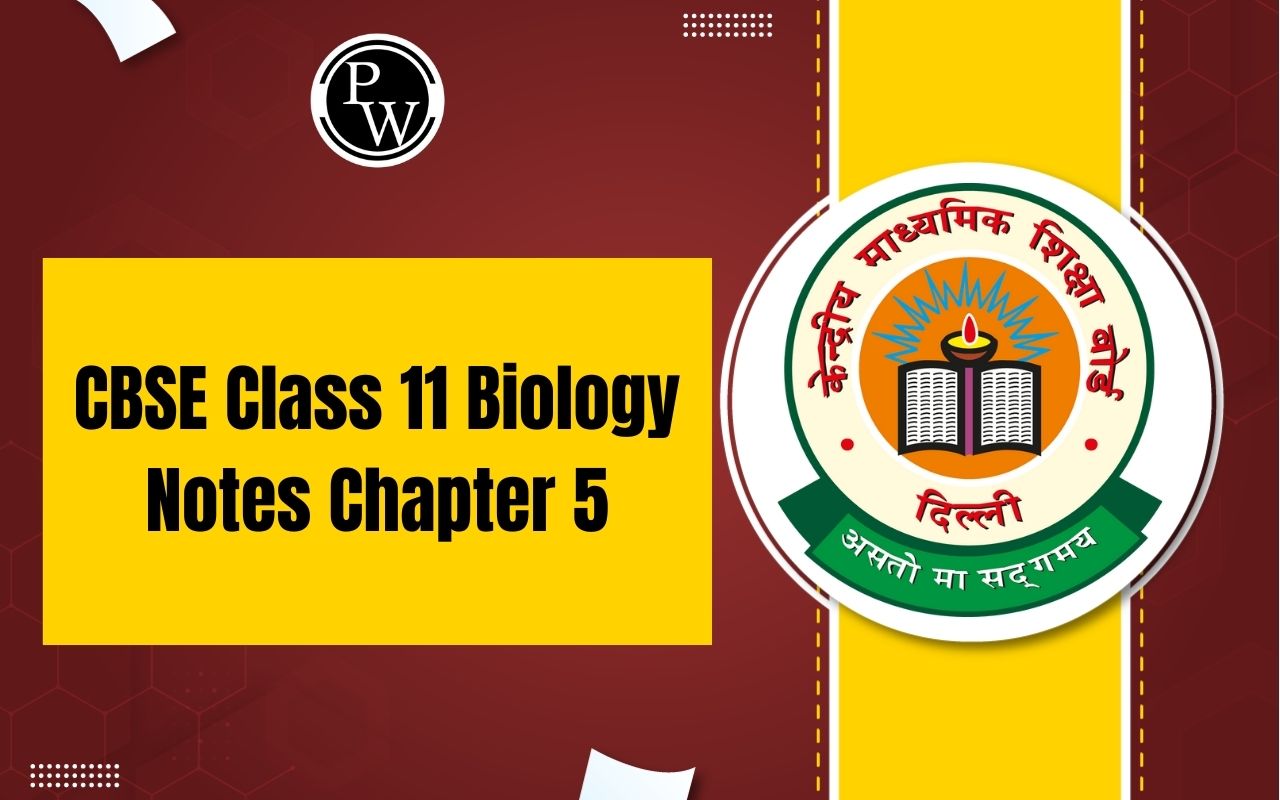

NCERT Solutions for Class 10 Maths Chapter 11 Exercise 11.1: The NCERT Solutions for Class 10 Maths Chapter 11 Exercise 11.1, "Areas Related to Circles," focuses on calculating areas and perimeters involving circles. It introduces concepts like the area of a circle, circumference, and parts of a circle, such as sectors and segments.
The exercise involves practical problems requiring the application of these formulas to solve real-world scenarios, including shaded regions, ring-shaped areas, and combined geometrical figures. These solutions provide step-by-step explanations to help students build a strong foundation in geometry while enhancing their problem-solving skills. This exercise is crucial for mastering circular geometry concepts in Class 10 Maths.NCERT Solutions for Class 10 Maths Chapter 11 Exercise 11.1 Overview
The NCERT Solutions for Class 10 Maths Chapter 11 Exercise 11.1, "Areas Related to Circles," are essential for understanding the application of geometry in real-life scenarios. This exercise focuses on calculating the area and perimeter of circles and their parts, such as sectors and segments. It develops critical problem-solving skills by applying these concepts to practical situations, including finding areas of shaded regions and composite figures. Mastering this exercise is crucial as it lays the foundation for higher-level geometry and is frequently tested in board exams. These solutions simplify complex problems, fostering clarity and confidence in students.NCERT Solutions for Class 10 Maths Chapter 11 Exercise 11.1 PDF
The NCERT Solutions for Class 10 Maths Chapter 11 Exercise 11.1, "Areas Related to Circles," are designed to help students understand concepts like the area and perimeter of circles, sectors, and segments. These solutions offer step-by-step explanations for solving problems involving composite shapes and shaded regions. Below, we have provided a downloadable PDF containing detailed solutions to help students enhance their understanding and excel in their exams.NCERT Solutions for Class 10 Maths Chapter 11 Exercise 11.1 PDF
NCERT Solutions for Class 10 Maths Chapter 11 Exercise 11.1 Areas Related To Circles
Below is the NCERT Solutions for Class 10 Maths Chapter 11 Exercise 11.1 Areas Related To Circles -1. Find the area of a sector of a circle with radius 6 cm if angle of the sector is 60°.
Solution:
It is given that the angle of the sector is 60° We know that the area of sector = (θ/360°)×πr 2 ∴ Area of the sector with angle 60° = (60°/360°)×πr 2 cm 2 = (36/6)π cm 2 = 6×22/7 cm 2 = 132/7 cm 22. Find the area of a quadrant of a circle whose circumference is 22 cm.
Solution:
Circumference of the circle, C = 22 cm (given) It should be noted that a quadrant of a circle is a sector which is making an angle of 90°. Let the radius of the circle = r As C = 2πr = 22, R = 22/2π cm = 7/2 cm ∴ Area of the quadrant = (θ/360°) × πr 2 Here, θ = 90° So, A = (90°/360°) × π r 2 cm 2 = (49/16) π cm 2 = 77/8 cm 2 = 9.6 cm 23. The length of the minute hand of a clock is 14 cm. Find the area swept by the minute hand in 5 minutes.
Solution:
Length of minute hand = radius of the clock (circle) ∴ Radius (r) of the circle = 14 cm (given) Angle swept by minute hand in 60 minutes = 360° So, the angle swept by the minute hand in 5 minutes = 360° × 5/60 = 30° We know, Area of a sector = (θ/360°) × πr 2 Now, area of the sector making an angle of 30° = (30°/360°) × πr 2 cm 2 = (1/12) × π14 2 = (49/3)×(22/7) cm 2 = 154/3 cm 24. A chord of a circle of radius 10 cm subtends a right angle at the centre. Find the area of the corresponding:
(i) minor segment
(ii) major sector. (Use π = 3.14)
Solution:
 Here AB be the chord which is subtending an angle 90° at the center O.
It is given that the radius (r) of the circle = 10 cm
Here AB be the chord which is subtending an angle 90° at the center O.
It is given that the radius (r) of the circle = 10 cm
(i) Area of minor sector = (90/360°)×πr 2
= (¼)×(22/7)×10 2 Or, Area of minor sector = 78.5 cm 2 Also, area of ΔAOB = ½×OB×OA Here, OB and OA are the radii of the circle i.e. = 10 cm So, area of ΔAOB = ½×10×10 = 50 cm 2 Now, area of minor segment = area of minor sector – area of ΔAOB = 78.5 – 50 = 28.5 cm 2(ii) Area of major sector = Area of circle – Area of minor sector
= (3.14×10 2 )-78.5 = 235.5 cm 25. In a circle of radius 21 cm, an arc subtends an angle of 60° at the centre. Find:
(i) the length of the arc
(ii) area of the sector formed by the arc
(iii) area of the segment formed by the corresponding chord
Solution:
 Given,
Radius = 21 cm
θ = 60°
Given,
Radius = 21 cm
θ = 60°
(i) Length of an arc = θ/360°×Circumference(2πr)
∴ Length of an arc AB = (60°/360°)×2×(22/7)×21 = (1/6)×2×(22/7)×21 Or Arc AB Length = 22cm(ii) It is given that the angle subtend by the arc = 60°
So, area of the sector making an angle of 60° = (60°/360°)×π r 2 cm 2 = 441/6×22/7 cm 2 Or, the area of the sector formed by the arc APB is 231 cm 2(iii) Area of segment APB = Area of sector OAPB – Area of ΔOAB
Since the two arms of the triangle are the radii of the circle and thus are equal, and one angle is 60°, ΔOAB is an equilateral triangle. So, its area will be √3/4×a 2 sq. Units. Area of segment APB = 231-(√3/4)×(OA) 2 = 231-(√3/4)×21 2 Or, Area of segment APB = [231-(441×√3)/4] cm 26. A chord of a circle of radius 15 cm subtends an angle of 60° at the centre. Find the areas of the corresponding minor and major segments of the circle. (Use π = 3.14 and √3 = 1.73)
Solution:
 Given,
Radius = 15 cm
θ = 60°
So,
Area of sector OAPB = (60°/360°)×πr
2
cm
2
= 225/6 πcm
2
Now, ΔAOB is equilateral as two sides are the radii of the circle and hence equal and one angle is 60°
So, Area of ΔAOB = (√3/4) ×a
2
Or, (√3/4) ×15
2
∴ Area of ΔAOB = 97.31 cm
2
Now, area of minor segment APB = Area of OAPB – Area of ΔAOB
Or, area of minor segment APB = ((225/6)π – 97.31) cm
2
= 20.43 cm
2
And,
Area of major segment = Area of circle – Area of segment APB
Or, area of major segment = (π×15
2
) – 20.4 = 686.06 cm
2
Given,
Radius = 15 cm
θ = 60°
So,
Area of sector OAPB = (60°/360°)×πr
2
cm
2
= 225/6 πcm
2
Now, ΔAOB is equilateral as two sides are the radii of the circle and hence equal and one angle is 60°
So, Area of ΔAOB = (√3/4) ×a
2
Or, (√3/4) ×15
2
∴ Area of ΔAOB = 97.31 cm
2
Now, area of minor segment APB = Area of OAPB – Area of ΔAOB
Or, area of minor segment APB = ((225/6)π – 97.31) cm
2
= 20.43 cm
2
And,
Area of major segment = Area of circle – Area of segment APB
Or, area of major segment = (π×15
2
) – 20.4 = 686.06 cm
2
7. A chord of a circle of radius 12 cm subtends an angle of 120° at the centre. Find the area of the corresponding segment of the circle. (Use π = 3.14 and √3 = 1.73)
Solution:
Radius, r = 12 cm Now, draw a perpendicular OD on chord AB and it will bisect chord AB. So, AD = DB Now, the area of the minor sector = (θ/360°)×πr
2
= (120/360)×(22/7)×12
2
= 150.72 cm
2
Consider the ΔAOB,
∠ OAB = 180°-(90°+60°) = 30°
Now, cos 30° = AD/OA
√3/2 = AD/12
Or, AD = 6√3 cm
We know OD bisects AB. So,
AB = 2×AD = 12√3 cm
Now, sin 30° = OD/OA
Or, ½ = OD/12
∴ OD = 6 cm
So, the area of ΔAOB = ½ × base × height
Here, base = AB = 12√3 and
Height = OD = 6
So, area of ΔAOB = ½×12√3×6 = 36√3 cm = 62.28 cm
2
∴ Area of the corresponding Minor segment = Area of the Minor sector – Area of ΔAOB
= 150.72 cm
2
– 62.28 cm
2
= 88.44 cm
2
Now, the area of the minor sector = (θ/360°)×πr
2
= (120/360)×(22/7)×12
2
= 150.72 cm
2
Consider the ΔAOB,
∠ OAB = 180°-(90°+60°) = 30°
Now, cos 30° = AD/OA
√3/2 = AD/12
Or, AD = 6√3 cm
We know OD bisects AB. So,
AB = 2×AD = 12√3 cm
Now, sin 30° = OD/OA
Or, ½ = OD/12
∴ OD = 6 cm
So, the area of ΔAOB = ½ × base × height
Here, base = AB = 12√3 and
Height = OD = 6
So, area of ΔAOB = ½×12√3×6 = 36√3 cm = 62.28 cm
2
∴ Area of the corresponding Minor segment = Area of the Minor sector – Area of ΔAOB
= 150.72 cm
2
– 62.28 cm
2
= 88.44 cm
2
8. A horse is tied to a peg at one corner of a square shaped grass field of side 15 m by means of a 5 m long rope (see Fig. 12.11). Find
(i) the area of that part of the field in which the horse can graze.
(ii) the increase in the grazing area if the rope were 10 m long instead of 5 m. (Use π = 3.14)

Solution:
As the horse is tied at one end of a square field, it will graze only a quarter (i.e. sector with θ = 90°) of the field with radius 5 m. Here, the length of rope will be the radius of the circle i.e. r = 5 m It is also known that the side of square field = 15 m(i) Area of circle = πr 2 = 22/7 × 5 2 = 78.5 m 2
Now, the area of the part of the field where the horse can graze = ¼ (the area of the circle) = 78.5/4 = 19.625 m 2(ii) If the rope is increased to 10 m,
Area of circle will be = πr 2 =22/7×10 2 = 314 m 2 Now, the area of the part of the field where the horse can graze = ¼ (the area of the circle) = 314/4 = 78.5 m 2 ∴ Increase in the grazing area = 78.5 m 2 – 19.625 m 2 = 58.875 m 29. A brooch is made with silver wire in the form of a circle with diameter 35 mm. The wire is also used in making 5 diameters which divide the circle into 10 equal sectors as shown in Fig. 12.12. Find:
(i) the total length of the silver wire required.
(ii) the area of each sector of the brooch.

Solution:
Diameter (D) = 35 mm Total number of diameters to be considered= 5 Now, the total length of 5 diameters that would be required = 35×5 = 175 Circumference of the circle = 2πr Or, C = πD = 22/7×35 = 110 Area of the circle = πr 2 Or, A = (22/7)×(35/2) 2 = 1925/2 mm 2(i) Total length of silver wire required = Circumference of the circle + Length of 5 diameter
= 110+175 = 285 mm(ii) Total Number of sectors in the brooch = 10
So, the area of each sector = total area of the circle/number of sectors ∴ Area of each sector = (1925/2)×1/10 = 385/4 mm 210. An umbrella has 8 ribs which are equally spaced (see Fig. 12.13). Assuming the umbrella to be a flat circle of radius 45 cm, find the area between the two consecutive ribs of the umbrella.

Solution:
The radius (r) of the umbrella when flat = 45 cm So, the area of the circle (A) = πr 2 = (22/7)×(45) 2 =6364.29 cm 2 Total number of ribs (n) = 8 ∴ The area between the two consecutive ribs of the umbrella = A/n 6364.29/8 cm 2 Or, The area between the two consecutive ribs of the umbrella = 795.5 cm 211. A car has two wipers which do not overlap. Each wiper has a blade of length 25 cm sweeping through an angle of 115°. Find the total area cleaned at each sweep of the blades.
Solution:
Given, Radius (r) = 25 cm Sector angle (θ) = 115° Since there are 2 blades, The total area of the sector made by wiper = 2×(θ/360°)×π r 2 = 2×(115/360)×(22/7)×25 2 = 2×158125/252 cm 2 = 158125/126 = 1254.96 cm 212. To warn ships for underwater rocks, a lighthouse spreads a red coloured light over a sector of angle 80° to a distance of 16.5 km. Find the area of the sea over which the ships are warned.
(Use π = 3.14)
Solution:
Let O be the position of the lighthouse. Here the radius will be the distance over which light spreads.
Given, radius (r) = 16.5 km
Sector angle (θ) = 80°
Now, the total area of the sea over which the ships are warned = Area made by the sector
Or, Area of sector = (θ/360°)×πr
2
= (80°/360°)×πr
2
km
2
= 189.97 km
2
Here the radius will be the distance over which light spreads.
Given, radius (r) = 16.5 km
Sector angle (θ) = 80°
Now, the total area of the sea over which the ships are warned = Area made by the sector
Or, Area of sector = (θ/360°)×πr
2
= (80°/360°)×πr
2
km
2
= 189.97 km
2
13. A round table cover has six equal designs as shown in Fig. 12.14. If the radius of the cover is 28 cm, find the cost of making the designs at the rate of ₹ 0.35 per cm 2 . (Use √3 = 1.7)

Solution:

14. Tick the correct solution in the following:
Area of a sector of angle p (in degrees) of a circle with radius R is
(A) p/180 × 2πR
(B) p/180 × π R 2
(C) p/360 × 2πR
(D) p/720 × 2πR 2
Solution:
The area of a sector = (θ/360°)×πr 2 Given, θ = p So, area of sector = p/360×πR 2 Multiplying and dividing by 2 simultaneously, = (p/360)×2/2×πR 2 = (2p/720)×2πR 2 So, option (D) is correct.Benefits of Using NCERT Solutions for Class 10 Maths Chapter 11 Exercise 11.1
Conceptual Clarity : Provides a clear understanding of concepts like circle area, circumference, sectors, and segments through detailed explanations.
Step-by-Step Solutions : Helps students learn systematic problem-solving methods, making complex problems easier to tackle.
Exam-Oriented : Prepares students effectively for board exams by covering essential topics and typical question patterns.
Time Management : Improves speed and accuracy with well-structured solutions.
Practical Applications : Enhances the ability to solve real-world problems involving circular shapes.
Confidence Building : Boosts confidence through comprehensive practice and error-free answers.
NCERT Solutions for Class 10 Maths Chapter 11 Exercise 11.1 FAQs
What is the important formula for area related to a circle?
What is the real life application of area related to circles?
Can circles have areas?
What is the purpose of area of a circle?












